

A fragile plant that is difficult to grow, Caladium enlivens houses and gardens with its unique foliage.
Key Caladium facts:
Name: Caladium
Common: elephant ears
Family: Araceae
Type: indoor plant
Height: 36 to 40 inches (0.8 to 1 meter) indoors, 13 feet (4 meters) in the wild
Exposure: Very well-lit – Soil: soil mix – Foliage: evergreen
Upon purchasing, if the pot is too small, proceed to repot the plant so that it may grow adequately.
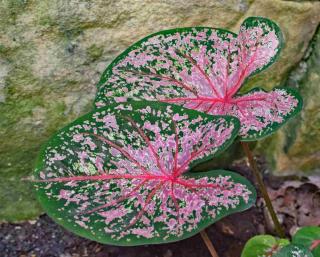
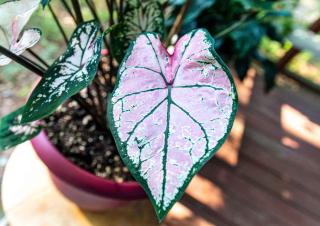
Ideal temperatures are around 68 to 70° F (20 to 21° C).
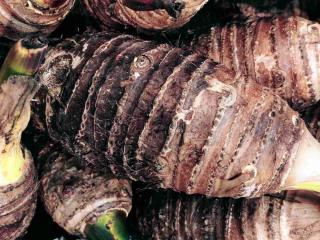
Make sure to break the clump apart without wounding the tubers if you want to propagate more than one new plant. Indeed, roots form tubers from the base of each leaf cluster.
Some Caladium varieties, like taro, are edible when prepared correctly! Most aren’t, however.
At the end of winter, if your caladium has lost many leaves, feel free to cut the foliage back entirely, this will stimulate the sending of new shoots and will rejuvenate your plant: you’ll have lush, fresh leaves again.
Remove damaged leaves regularly by snipping them off at the base.
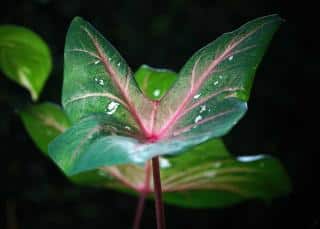
All year long, and especially during summer, spray water on the leaves to recreate the moisture levels of its natural habitat.
Watering in spring and summer
Keep the soil mix a bit moist and check that water drains properly.
Add leaf plant liquid fertilizer every 8 to 15 days during the growing phase.
Watering your Caladium in fall and winter
Reduce watering and wait for the soil to be dry before watering again.
Stop adding fertilizer.
Most diseases impacting the plant are those usually infecting indoor plants, like red spider mite, aphids and scale insects.
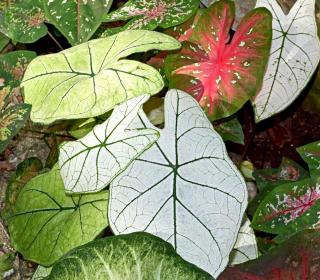
Both have beautiful cultivars. For instance, the Fancy-leaved “Candidum” is white with greenish veins, and the ‘Pink Gem’ is a short, salmon-colored strap-leaved variety.
→ Read also:
Did you know that indoor plants can clean out air pollutants?
A fabulous indoor plant, caladium is nonetheless poisonous. The entire plant from root to leaf is toxic both if ingested and in case of prolonged skin contact.
It must be handled with gloves to avoid risking intoxication.
Something is eating the caladiums leaves that are indoor. Will soapy water kill whatever is eating it.
Depends on what it is. Small insects like scale insects or thrips will die with soapy water. Most small caterpillars will, too. But larger caterpillars might still survive, for those it’s easier to find them and pick them off. If ever you can’t find what’s eating your plants in the daytime, then try looking for them during the night or early morning. It might be slugs and snails, again for these it’s easier to pick them and throw them out.
I didn’t find anything like that but I did find a sticky cobweb. So I put sevin powder and it seems to have done the trick. 🤞🤞🤞
Well, that’s also a solution! It might have been red spider mite, then. They also tend to make weird webbings.